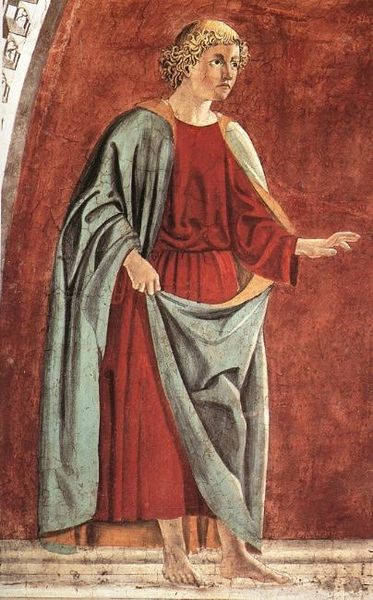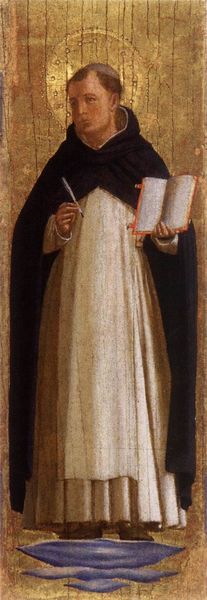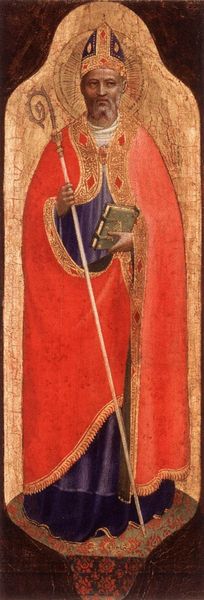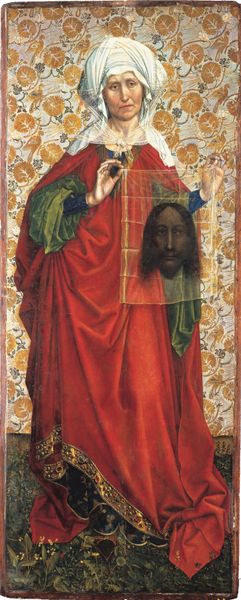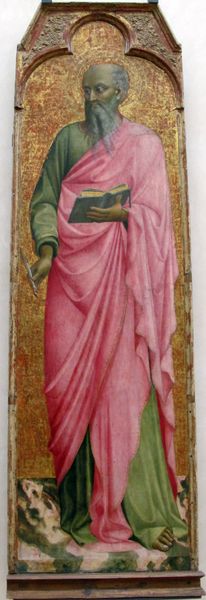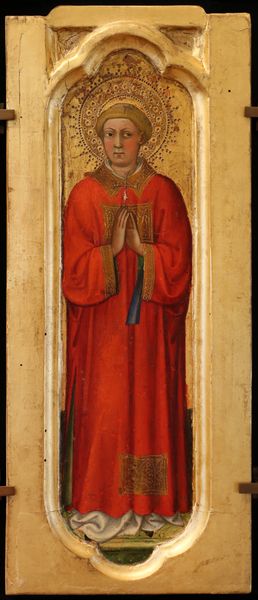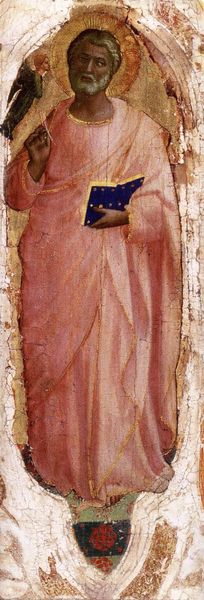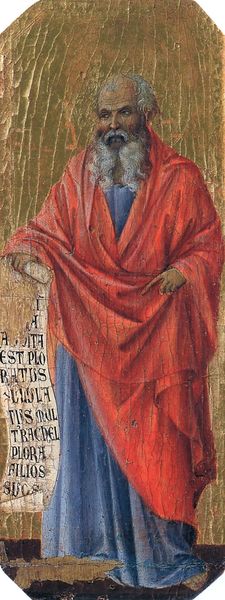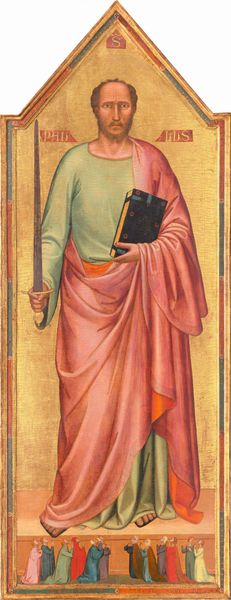
stain, tempera
#
portrait
#
stain
#
tempera
#
figuration
#
oil painting
#
christianity
#
line
#
history-painting
#
italian-renaissance
#
early-renaissance
Copyright: Public domain
Curator: Let's turn our attention now to Fra Angelico’s "Saint Mark," a tempera and stain on panel artwork painted around 1424. It's currently residing at the Musée Condé in Chantilly. It’s an image that whispers serenity, don’t you think? Editor: It does. He seems suspended, timeless. The red is such a striking color choice—it feels both royal and earthly, weighty and delicate all at once. Is it supposed to evoke the color of his blood? Curator: Precisely! Red signifies martyrdom, his sacrifice, passion. But also royalty, connecting him to divine authority. Notice too how he’s portrayed, holding a pen and a book, indicating his role as an Evangelist. These elements work together. Editor: The lion at his feet! So tiny! It’s got to be Saint Mark's emblem, a symbol. How did lions become his thing? Curator: Ah, that is where the symbol becomes cultural. The lion represents courage, royalty, and Mark's Gospel starts with John the Baptist, whose "voice cries in the wilderness" is seen symbolically as the roar of a lion. The lion helps visually define the text. Editor: It's amazing how artists layer those concepts into their work, isn't it? Fra Angelico seems to have embraced the symbolism while subtly conveying such gentle humanity. His St. Mark seems deeply contemplative. I also admire the details such as his facial expression, those very expressive eyes... you can really see how skilled this master was! Curator: Indeed, it is an important turning point for art history: combining the spiritual with real people is difficult and Fra Angelico knew how to blend them wonderfully. The line work and use of stain adds a certain fragility as well. Editor: Fra Angelico really managed to make these symbolic images feel so present. His sensitivity allows them to express faith in a manner that is quite accessible. Curator: It does. He lets the symbolic and emotional touch resonate together beautifully.
Comments
No comments
Be the first to comment and join the conversation on the ultimate creative platform.
